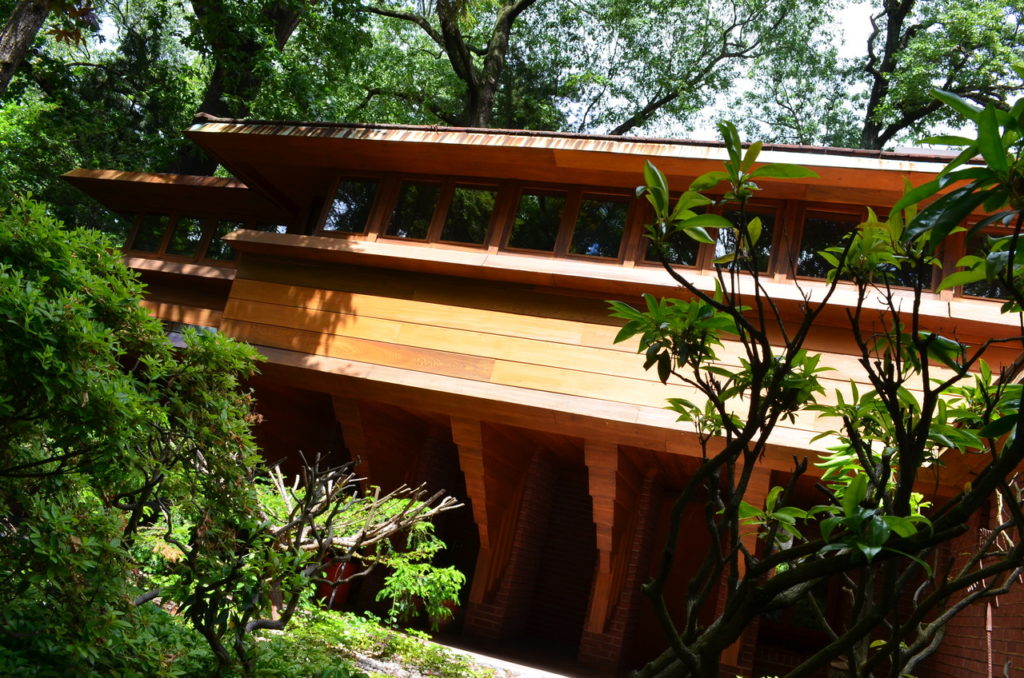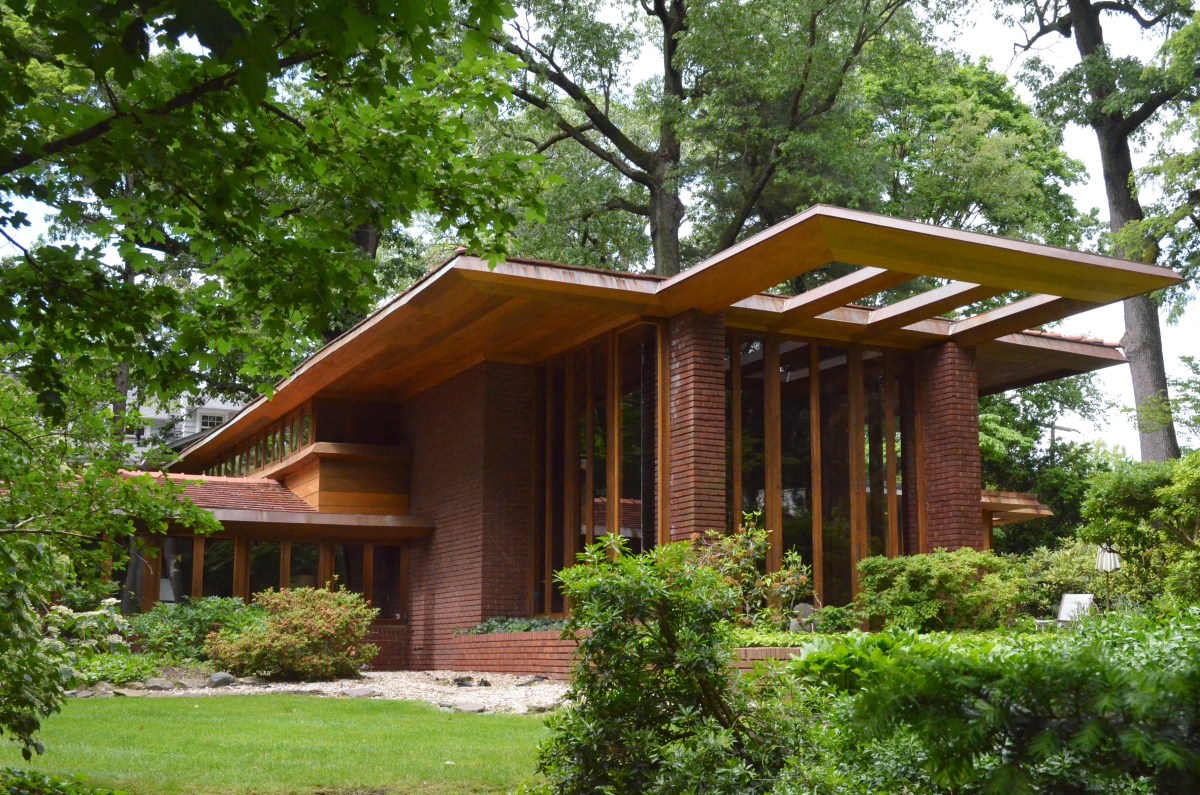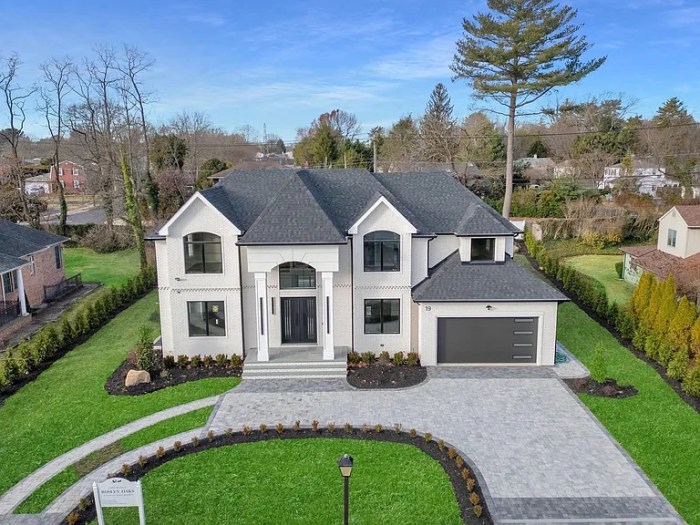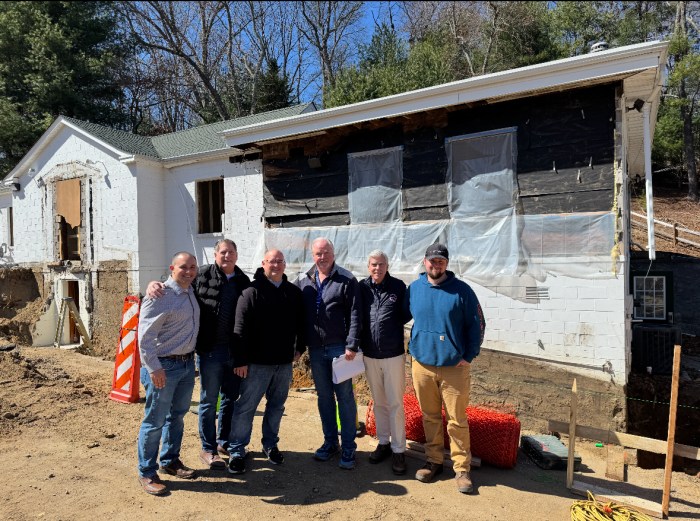The Rebhuhn House, as it’s known, is Frank Lloyd Wright’s sole Long Island project, but singularity is not its only charm.
It was a comeback project for Wright, the first after a dry spell of more than 20 years, an attempt to move past his earlier prairie stylings into a design that was at once modern and utilitarian and suited for the newly evolving life of suburbia. Usonian, he called it, after an idealized vision of America that celebrated individuality and oneness with nature.
“People thought he was dead,” said Caroline Rob Zaleski, author of Long Island Modernism: 1930-1980. “He was forgotten. He didn’t work all through the 1920s and 1930s. If you were a modern architect coming up in architecture school in the 1930s, you were hardly taught Frank Lloyd Wright.”
The house, on a pie slice-shaped parcel in Great Neck Estates, was begun in 1937 for Benjamin and Anne Rebhuhn, publishers of what was then considered “morally progressive” content, including articles on birth control, for which Benjamin was once jailed.
Wealthy and intellectual, they were the perfect clients for Wright, who sought to make the design and building experience as much metaphysical as physical, guiding customers through a “spiritual and intellectual transformation,” according to Zaleski.
“It’s really not about designing a building,” added Timothy Totten, an expert on Wright design. “It’s about designing a place that people live and work in. Architecture is about designing a way of life.”
Built as a cruciform, the $35,000 house features a two-story living room and library with floor-to-ceiling windows on either side, plus a dining room, servants quarters, two bedrooms and an open kitchen, which Wright referred to as a “work room.” A 28-foot couch is built into the wall of the living room; the room itself was built around an oak tree, although it later died.
Red cypress board is used inside and out, complementing the structure’s brick and red roofing tiles. The kitchen was remodeled in the 1970s after a fire that might have claimed the entire residence save for the heroic efforts of the local volunteer fire department. Wright acolyte Morton Delson supervised the restoration.
Subsequent owners of the house have said they set out to find a home that met their needs but, having encountered Wright’s design, quickly succumbed to its visual impact.
“The minute we walked in the door, all those requirement went out the window,” one owner told The New York Times. “Aesthetically, the house was in a class by itself. Nothing else in Great Neck could compare.”
He has spent the “cost of a college education” repairing the roof.
“But it’s like living in a work of art,” he added. “We would never give it up.”
The Rebhuhn House is one of the few modern movement homes on Long Island that has been neither renovated to the point of desecration nor completely demolished. Sadly, Wright did not continue to build on Long Island, but took his Usonian ideals north to Westchester and a 95-acre planned community near Pleasantville.
“We could only imagine what he would have done with a site mid-Long Island, like the Hempstead Plains,” Zaleski said. “He would have liked Long Island. It was a place ripe for development.”


































